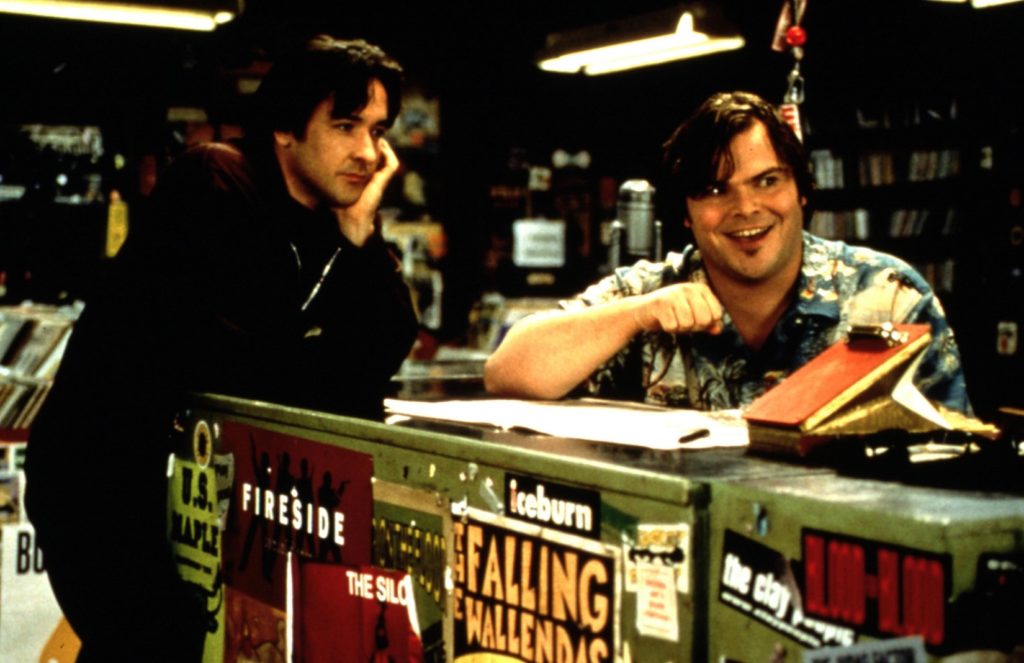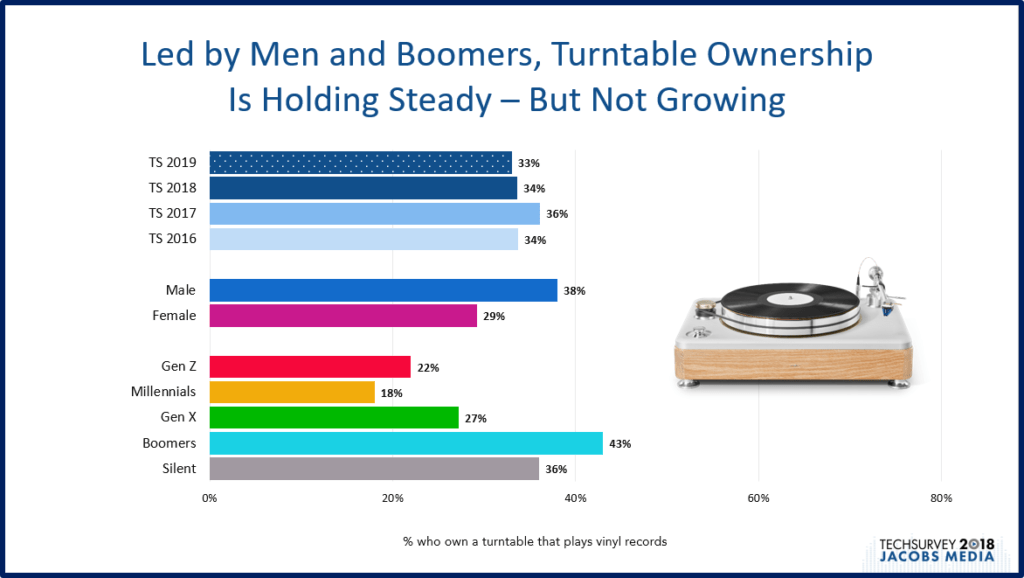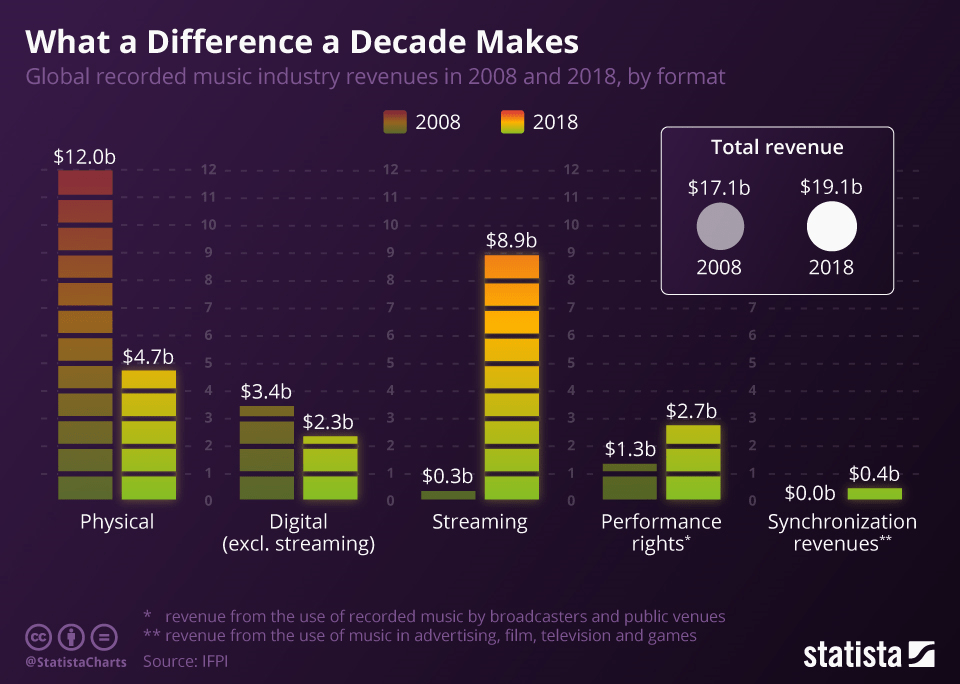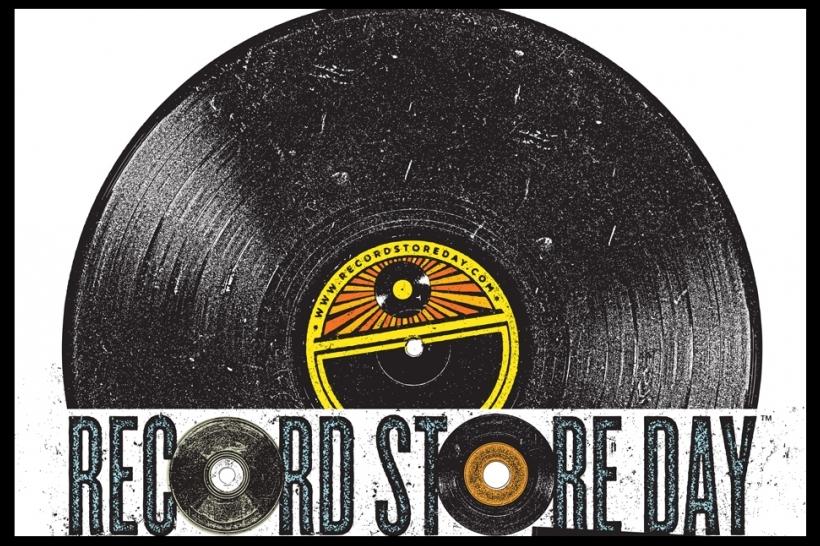
Last week, I checked into the Kabuki Hotel in San Francisco. It was one of those weeks in the Bay Area when a Google convention drove the price of hotel rooms to stratospheric costs. So, I ended up in Japantown at a hotel I’d never stayed at before.
Let me tell you – it’s beautiful, contemporary, and a truly unique space. The manager ended up checking me in, and during his orientation of the hotel reminded me I had arrived on “Vinyl Day,” which they do every Tuesday. In the lobby of the hotel, there’s a turntable that’s accessible to anyone and everyone, along with stacks of a couple hundred albums to choose from. At the time I walked in, Steve Miller’s “Anthology” was playing. It was a very, cool atmospheric scene.
Many Baby Boomers, in particular, have a romantic relationship with the notion of visiting a record store, picking through the stacks and bins, and reconnecting with the music of their past. Those stores were glorified in the 2000 movie, “High Fidelity,” staring John Cusack and then newcomer Jack Black. Cusack played Rob Gordon, the store’s conflicted owner who struggled with balancing his relationships with both the music and the women that have played major roles in his life.
This past Saturday was Record Store Day, a now-annual event that was started in 2008 to catch the vinyl wave. (A second day is celebrated on Black Friday each year.)
Over the weekend, thousands of record stores participated, and this year’s ambassadors were Pearl Jam. Labels, artists, and the stores themselves created promotions to celebrate the day and take advantage of this multi-generational renaissance in vinyl.
But has vinyl truly become a hot physical format for music once again? Or is it a fad rooted in nostalgia?
Our new Techsurvey indicates the movement may have peaked, based on turntable ownership. And this year, our sample skewed older, providing a demographic advantage for the vinyl movement.

A recent story in The Vibe by Adam Aziz counts down the “10 Ways The Music Industry Will Change In 10 Years.” Among his predictions? The death of record labels, automation taking on a role in the songwriting and production process, and the rise of VR (virtual reality) as a way to create experiences at concerts, festivals, in the studio, and backstage.
But his top prognostication?
The death of the physical format of music.
They attribute the rise of vinyl to the nostalgic trend in tactile platforms (record albums, cassettes, books). Aziz suggests we should all “temper our excitement” because streaming has emerged as the dominant way we consume music.
You can see that seemingly unstoppable trend since Spotify launched in 2008 (interestingly, the same year that National Record Store Day debuted).
The Statista chart below compiled by IFPI (yes, the International Federation of the Phonographic Industry) clearly tracks the trend toward streaming versus owning music.
In “What A Difference A Decade Makes,” Statista’s Felix Richter concludes, “As market leaders Spotify and Apple Music continue to grow, it is all but certain that streaming will dominate music consumption going forward, especially considering that many of today’s and most of tomorrow’s listeners have grown up without a CD player and probably consider an iPod a relic from a long-forgotten time.”

The Verge’s Partricia Hernandez reports that streaming made up 75% of music industry sales last year, based on RIAA data. That’s a heady stat that will most likely continue to grow with each passing year.
The shaky state of the album has motivated most record labels and artists to even rethink their release strategy. A story in Rolling Stone by Elias Leight suggests they’re giving much thought to these days to how albums are sequenced. If you’re Ariana Grande, you can do what you want. For everyone else, spreadsheet analysis has now become a required course in the music business.
That’s because in the old days, you bought an album, and you bought all the tracks – good or bad. Now, data is causing artists to rethink everything – long intros on videos are being scrutinized, and more and more, artists are placing their best songs up front in the sequence, hoping to capture a consumer’s attention before they skip out.
We moved into a new home a couple years back, and while designing the media room, I knew I wanted a new turntable. And I use it – somewhat  infrequently – to play that occasional Moody Blues, Steely Dan, or Stones album. It is enjoyable to take that vinyl treasure out of its sleeve, and drop the tone arm on Side 1, Track 1, and let it play in the order in which it was intended.
infrequently – to play that occasional Moody Blues, Steely Dan, or Stones album. It is enjoyable to take that vinyl treasure out of its sleeve, and drop the tone arm on Side 1, Track 1, and let it play in the order in which it was intended.
But I don’t forget for a moment this activity is as retro in today’s Digital Age as using dial phone or a typewriter. There’s something comforting about it, especially for those of us who grew up in the pre-Internet era, and remember record stores like Rob Gordon’s Championship Vinyl in Chicago.
So, as my old friend often asks me,
“So, what’s on your turntable?”
BTW, Mental Floss’ Garin Pirnia has compiled a list of “The 13 Coolest Record Stores in America.” You can access it here.
- What To Do If Your Radio Station Goes Through A Midlife Crisis - April 25, 2025
- A 2020 Lesson?It Could All Be Gone In A Flash - April 24, 2025
- How AI Can Give Radio Personalities More…PERSONALITY - April 23, 2025




Thanks for today’s post, Fred. I talked about it a couple times this past Saturday on my WROR/Boston air shift, specifically mentioning vinyl available from WROR aritsts–including 80s artists and that Bohemian Rhapsody picture disc(which I STILL don’t have).
I have lots of vinyl. AND a turntable. Yet, I hardly EVER listen to them. IMHO, There’s a reason CDs became popular: pops & clicks(and cue-burn, lol)
My music listening these days comes mostly from streaming, and of course, terrestrial radio.
I do, however, use vinyl for something…some of my colored vinyl and picture-discs adorn the walls of our “rock & roll” kitchen. I’ll have to send you a photo someday!
JC, thanks for the note about vinyl and it’s changing place in our lives, especially for a core Classic Rocker like youself. I remember being excited when CDs came out, because of ease of use, greater durability, and even less storage space.
As for the vinyl on your walls, I was recently in a public radio station where the walls are adorned with “album art” – vinyl recoreds turned into art by hundreds of their listeners.
I lived in Princeton for many years, where the Princeton Record Exchange provided a glorious browsing-through-bins experience. I’d leave with an armful of $1.99 records, bring half of them back a week later for 50 cents each, and start the cycle over.
But what really sparks my vinyl nostalgia is remembering my first radio gig, pre-CD, holding the disc edge with a finger, one-quarter spin back, for a laser-sharp cue.
Nostalgia notwithstanding, I have zero interest in buying wax or building a turntable listening system. Apps, voice control, wireless. Personalized streams (including AM/FM) delivered where and when I want. That is the unstoppable use case.
Brad’s, its the circle of hi-tech life. Even among many of us who were dyed-in-the-wool vinyl fans have discovered the ease of enjoying music without the hassle of pops, clicks, or even walking across the room to flip the record over the Side 2. Appreciate the comment.